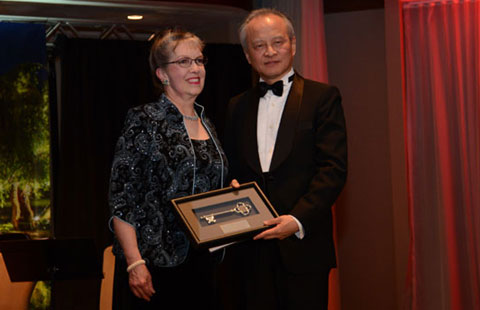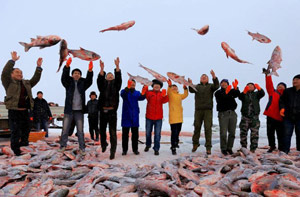FTAs form base of regional integration
Updated: 2014-11-26 07:40
By Xu Man(China Daily)
|
||||||||
In terms of mutual investment, the China-Australia FTA is aimed at simplifying the review procedure, most-favored-nation treatment, favorable market access rules and market transparency. In particular, Australian exports of dairy products, wine and minerals to China would yield higher profits, and agricultural cooperation between the two countries would deepen with more Chinese enterprises being granted entry to Australia.
The agreements with Seoul and Canberra would expand Beijing's FTA network, through which China has completed free trade negotiations with 12 economies and organizations, including the Association of Southeast Asian Nations and Switzerland. In the broader Asia-Pacific region, more than 50 bilateral, trilateral and multilateral FTAs have already taken shape.
The coexistence of these agreements, however, could fragment the regional economy because of their different purposes and working mechanisms. Pursuing better economic integration and connectivity within the region, President Xi Jinping has pledged to forge ahead with the more inclusive Free Trade Area of the Asia Pacific, the process for which was initiated at the APEC meeting in Beijing.
Of all the multilateral trade pacts, the US-led Trans-Pacific Partnership Agreement and the Regional Comprehensive Economic Partnership favored by ASEAN could be the best driving force for the establishment of the FTAAP. But given its high entry standards and strong constraints, which have prevented China and the ROK to join, the TPP alone cannot help integrate the trans-Pacific economies.
Similarly, the more open and flexible RCEP, comprising diverse countries such as China, the ROK and Australia, will also find it difficult to help integrate the region's economies, because it has not attracted the US, the world's largest economy, even though seven of the 12 TPP members - Japan, Australia, New Zealand, Vietnam, Malaysia, Brunei, and Singapore - are also participating in the RCEP negotiations.
It is thus evident that the Asia-Pacific economies will accord priority to regional economic integration to pursue their respective developments. The China-ROK and China-Australia FTAs, once completed, will not only expedite the RCEP negotiations, but also promote freer cross-Pacific trade and investment.
The author is a researcher at the Chinese Academy of International Trade and Economic Cooperation, affiliated to the Ministry of Commerce.

 Music at her fingers
Music at her fingers
 Across America Over the Week (Jan 16 - Jan 22)
Across America Over the Week (Jan 16 - Jan 22)
 Spend Chinese New Year in style
Spend Chinese New Year in style
 Ili river valley becomes a popular destination for swans
Ili river valley becomes a popular destination for swans
 Philip Ma: from scientist to businessman
Philip Ma: from scientist to businessman
 Birmingham's Spotlight on China dinner
Birmingham's Spotlight on China dinner
 How to distinguish doucai, wucai, Famille-rose and enamel porcelain
How to distinguish doucai, wucai, Famille-rose and enamel porcelain
 Xinjiang lake in bumper fishing season
Xinjiang lake in bumper fishing season
Most Viewed
Editor's Picks

|

|

|

|

|

|
Today's Top News
Houston's SW Chinatown
China to focus on reforms, opening of capital market
Slowdown brings new risks to banks
Trade group calls for BIT
Market status for China is 'political' issue
Birmingham's Spotlight on China dinner
Bank takes renminbi-clearing seriously
Traditional Garb
US Weekly

|

|







